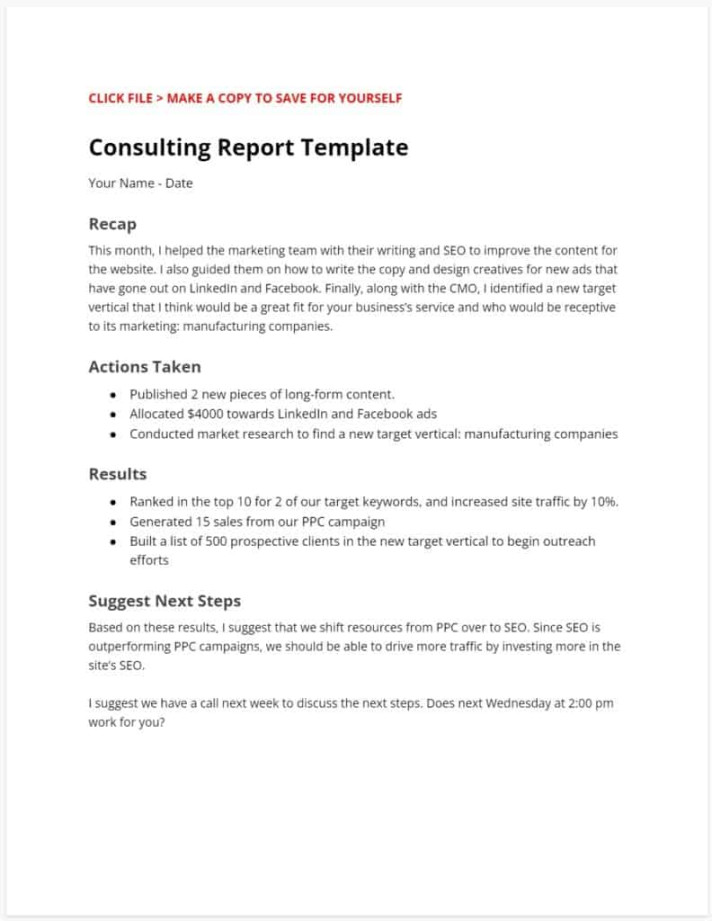A consultant Report template serves as a foundational framework for delivering comprehensive and impactful reports to clients. By adhering to specific design elements and formatting conventions, consultants can enhance the professionalism and credibility of their work. This guide will delve into the key components of a professional consultant report template, focusing on the design elements that foster trust and convey expertise.
Title Page

The title page is the initial impression a consultant report makes on the client. It should be visually appealing and include the following essential elements:
Report Title: A concise and informative title that accurately reflects the report’s content.
Executive Summary
The executive summary is a concise overview of the entire report, designed to provide readers with a quick understanding of the key findings, recommendations, and conclusions. It should be written in clear and concise language, highlighting the most important points.
Table of Contents
A well-structured table of contents is essential for guiding readers through the report and making it easy to navigate. It should include the major headings and subheadings, along with corresponding page numbers.
Introduction
The introduction section should provide background information on the project or topic being addressed, outlining the scope, objectives, and methodology. It should also clearly state the purpose of the report and its intended audience.
Methodology
The methodology section details the research and analysis techniques employed in the consulting project. This includes information on data collection methods, data analysis tools, and any specific methodologies used.
Findings
The findings section presents the results of the research and analysis conducted. It should be organized in a logical manner, using headings and subheadings to structure the information. Visual aids such as charts, graphs, and tables can be used to enhance understanding.
Analysis and Discussion
This section provides an in-depth analysis of the findings, interpreting the results and drawing meaningful conclusions. It should address any relevant questions or concerns and discuss the implications of the findings.
Recommendations
Based on the analysis and discussion, the recommendations section outlines specific actions or strategies that the client can take to address the identified issues or opportunities. These recommendations should be practical, achievable, and aligned with the client’s goals.
Conclusion
The conclusion section summarizes the key findings, recommendations, and overall conclusions of the report. It should reinforce the main points and leave a lasting impression on the reader.
Appendices
Appendices can be used to include supporting documentation, such as raw data, surveys, or detailed calculations. This section is optional and should only be included if the information is essential for understanding the report’s findings.
Design Considerations
To create a professional and visually appealing consultant report template, consider the following design elements:
Font: Choose a clear and legible font that is easy to read, such as Arial, Calibri, or Times New Roman.
By carefully considering these design elements and following the guidelines outlined in this guide, consultants can create professional and impactful report templates that effectively communicate their findings and recommendations to clients.